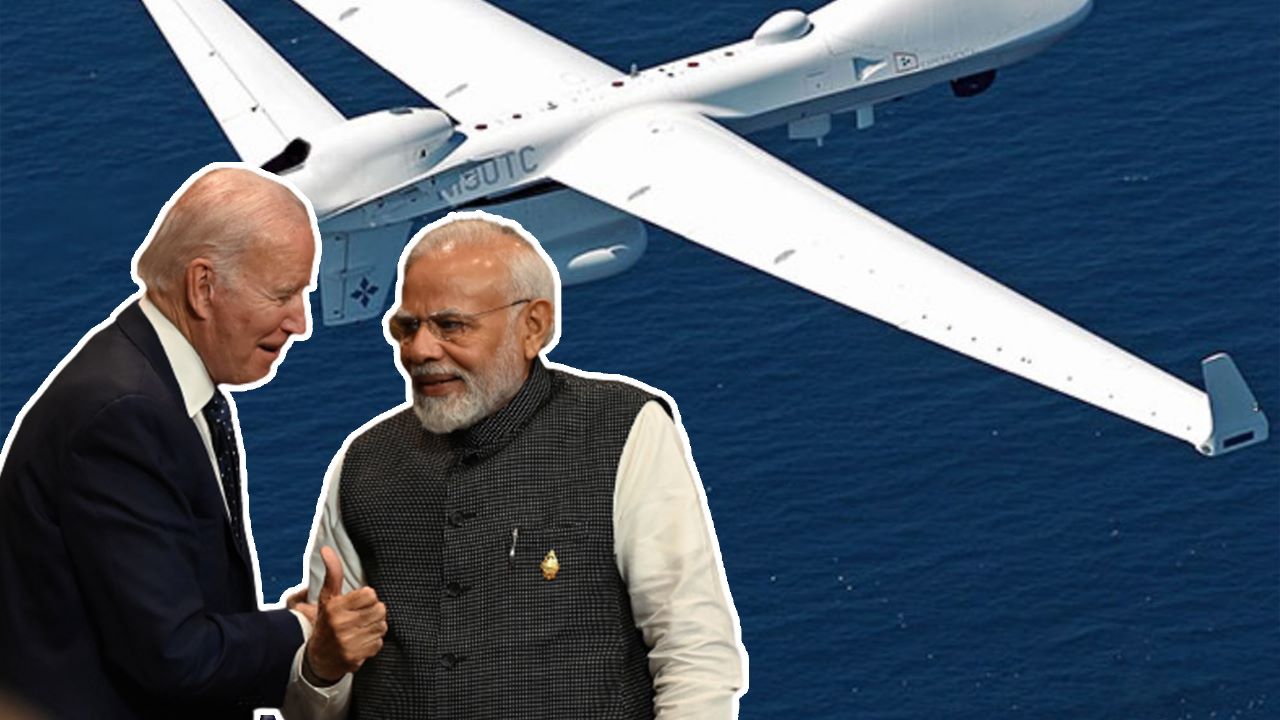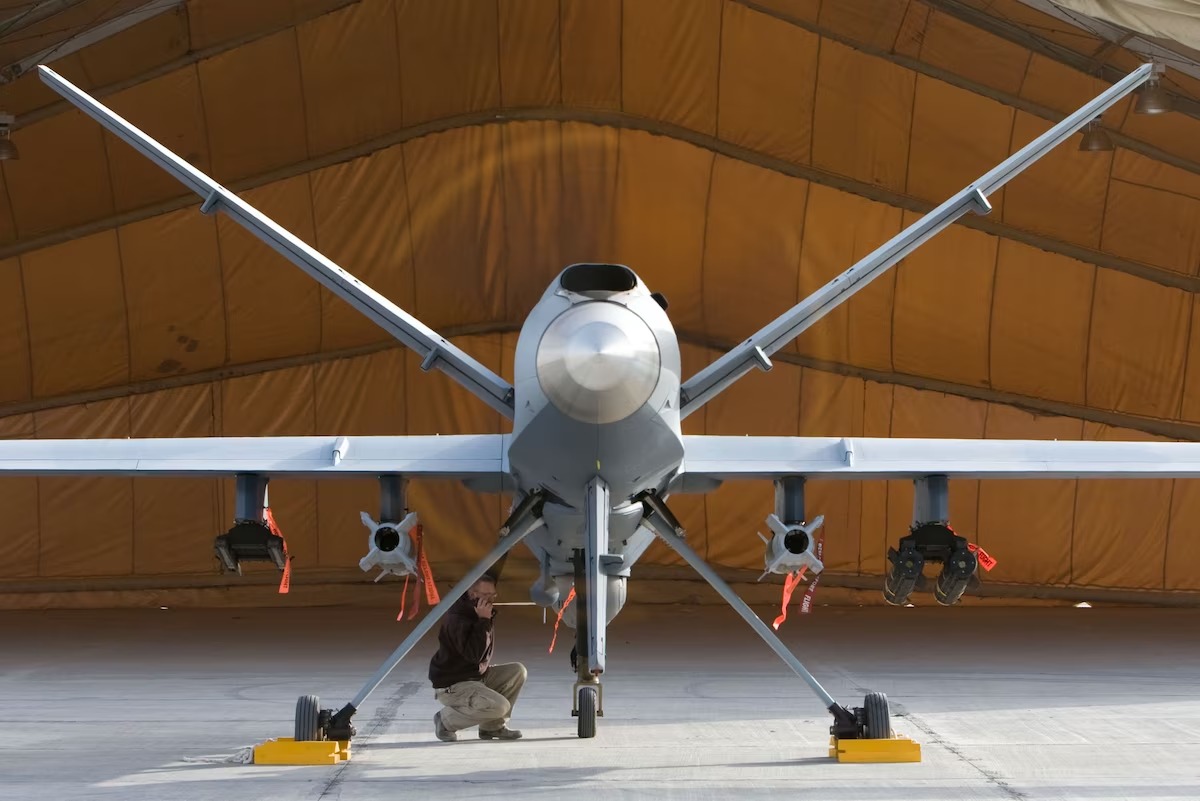Despite the news reports to the contrary, the US Congress approved the nearly US $4 billion deal to sell MQ-9B ‘Sky Guardian’ to India. This signifies not only the fact that the Indo-US relationship can weather out storms of significant strength but also bring one of the world’s most deadly remotely piloted vehicles (RPV) to India to become a centerpiece of its Indo-Pacific policy.
These ‘hunter-killer’ aircraft have seen many conflicts and have killed dozens of high-value targets for the US armed forces, including ISIS-Khorasan leader Abu Sayed, Iranian General Qassem Soleimani, and Taliban leader Mullah Mansour.
The two MQ-9Bs that India has acquired on lease have proved their mettle and have been deployed from the frigid Himalayas during confrontation with China to anti-piracy missions of the Indian Navy.
The MQ-9B ‘Sky Guardians’ can be part of India’s operational network and be its “unblinking eye” in the battlespace. Built by the US Defense and Aerospace Company General Atomics Aeronautical Systems, Inc., the MQ-9Bs can undertake a myriad of operations ranging from intelligence, surveillance, and reconnaissance missions to strike.
Their 40 hours of endurance make them suitable for the military application of the MQ-9Bs. The single remotely piloted aircraft undertakes different missions. An MQ-9B taking off from the Indian coast can have a dedicated mission to support the Indian Navy’s operations to counter piracy by being equipped with maritime search radar or other payloads. Or it can be sent for routine patrolling in the Indian Ocean Region.
The ‘Sky Guardian’ variant of the MQ-9B is more affordable and has a fraction of the footprint. They can effectively operate at low and high altitudes (500 to 40,000 feet). They can be deployed in high-risk environments without concern for loss of aircrew, and their sophistication can be gauged from the fact that they are built to be certified to fly in civil airspace.
India will buy 31 MQ-9Bs through the Foreign Military Sale (FMS) route. Fifteen of these will go to the Indian Navy, and eight each will be given to the Indian Army and the Indian Air Force.
The drones will plug a critical capability and capacity gap in the Indian forces. The open architecture of the MQ-9Bs means the aircraft can be integrated with different payloads suitable for its missions.
Before taking MQ-9s on lease, the Indian Navy operated two variants of fixed-wing UAVs – Searcher and Heron, both imported from Israel in 2002. The Heron is a Medium Altitude Long Endurance UAV and could not match the altitude envelope of MQ-9Bs. Searcher is a multi-mission tactical UAV for surveillance.
The biggest drawback of these two UAVs operated by the Indian Armed Forces is that they are not satellite-linked. This means they are tied to a ground/sea station with a maximum communication range between 150-200 km. This limits their range, unlike the MQ-9B, which can go around the world.
The MQ-9Bs have been conducting counter-insurgency and counter-terrorism missions for the US armed forces and can complete the “kill loop” for the Indian forces by implementing the “seeker to shooter” concept.
The concept entails that these RPA are connected to command far away and can fire missiles to strike their targets. The Sky Guardians will come with AGM-114R Hellfire air-surface missiles that can be used for precision drone strikes against high-value targets. India is also buying laser small-diameter bombs.
The acquired MQ-9s, besides providing intelligence, surveillance, and reconnaissance from standoff ranges, can act as communication nodes and relay centers connecting sensors and shooters in the battlespace.
Whether on the border along China or in the vast swathes of the Indian Ocean Region, these “hunter-killers” will help increase domain awareness.
In simpler words, a commander can use the MQ-9s onboard sensors and weapons to conduct armed reconnaissance and pre-planned strikes. MQ-9s can find, fix, track, target, engage, and assess critical emerging targets (both moving and stationary).
In a recent piracy bid that the Indian Navy foiled, the MQ-9Bs, along with the P-8Is, maintained continuous surveillance of the hijacked merchant ship before the Indian Naval warship intercepted it.
These Remotely Piloted Aircraft can also gather aerial intelligence and target acquisition for other airborne platforms. It can increase the eyes and ears of Indian warships, verifying if choke points are free of hostile units. In conjunction with P-8Is manned by human crew, the Sky Guardian can extend the reach of the manned patrolling aircraft.
During exercises, the RPA has demonstrated the capability to detect and monitor submarines. Considering the Chinese submarines have been foraying into the Indian Ocean Region with increased frequency, the capability will be handy for the Indian Navy to keep track of the Chinese submarines.
In exercises with the US Navy off the West Coast of the United States, the SeaGuardian has shown it can release sonobuoys, detect submarines, and monitor them over time. The SeaGuardian can also monitor sonobuoys released by other aircraft, increasing the utility of integrating unmanned platforms with the Navy’s existing human-crewed ones.
MQ-9B can provide roughly 80 percent of the capability of a large human-flown maritime patrol aircraft at about 20 percent of its cost per hour. This makes it very important for the Indian Navy, whose area of influence straddles between the Gulf of Aden in the west and the Malacca Strait in the East.
The MQ-9B can take off from a small runway as short as 4,000 feet using an Automatic Takeoff and Landing Capability (ATLC), making it suitable for the Indian Army operating in remote regions. It requires a handful of essential personnel for support.

The Harbinger Of RPA Age
On January 23, 2001, an MQ-1 Predator launched an inert Hellfire missile at a target tank located on a weapons test range in California. This event marked the first-ever successful missile launch from a remotely piloted aircraft.
In the following weeks, the Predator, the predecessor of the MQ-9 Reaper, carried out additional tests culminating in the first launch of a live missile.
Just months later, Predators were deployed abroad to Afghanistan to fight Al Qaeda and the Taliban. The Operation Enduring Freedom transformed the American’s way of war. Obtaining actionable military intelligence became simple, and Predators gave the US commanders an “unblinking eye” in the battlespace.

The first strike by an RPA occurred on October 7, 2001, the opening day of Operation Enduring Freedom combat operations, narrowly missing Taliban leader Mullah Omar.
The other milestone achieved during the conflict in Afghanistan has been the “remote split operations,” wherein operators based in the US could operate the Predators flying in Afghanistan.
The Predator Ground Control Station in the US was connected to the Satellite communications infrastructure using existing cross-oceanic fiber optic networks. Later, in November 2001, the Predator managed to transfer a live full-motion video directly to other aircraft.
Since then, the Predators have come a long way, with MQ-9B (the latest variant) accumulating 7 million flight hours.
Meanwhile, the USAF has been pushing to retire its MQ-9 UAVs, noting its obsolescence against near-peer rivals like Russia and China. Despite its first operations two decades back, the Reapers will be transformative for the Indian Armed Forces and become a multiplier force.
- Ritu Sharma has been a journalist for over a decade, writing on defense, foreign affairs, and nuclear technology.
- She can be reached at ritu.sharma (at) mail.com
- Follow EurAsian Times on Google News




